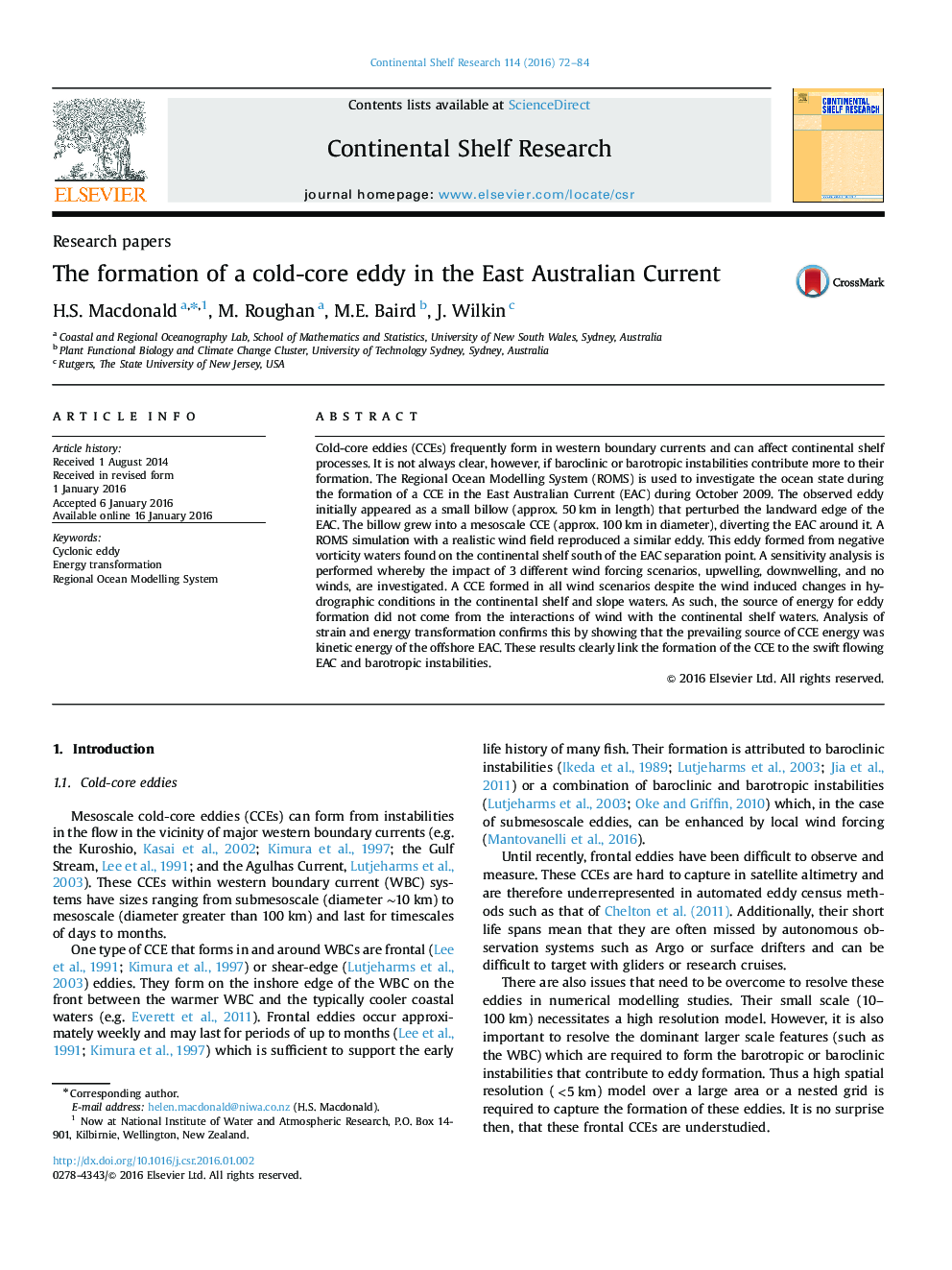| Article ID | Journal | Published Year | Pages | File Type |
|---|---|---|---|---|
| 4531625 | Continental Shelf Research | 2016 | 13 Pages |
Abstract
Cold-core eddies (CCEs) frequently form in western boundary currents and can affect continental shelf processes. It is not always clear, however, if baroclinic or barotropic instabilities contribute more to their formation. The Regional Ocean Modelling System (ROMS) is used to investigate the ocean state during the formation of a CCE in the East Australian Current (EAC) during October 2009. The observed eddy initially appeared as a small billow (approx. 50Â km in length) that perturbed the landward edge of the EAC. The billow grew into a mesoscale CCE (approx. 100Â km in diameter), diverting the EAC around it. A ROMS simulation with a realistic wind field reproduced a similar eddy. This eddy formed from negative vorticity waters found on the continental shelf south of the EAC separation point. A sensitivity analysis is performed whereby the impact of 3 different wind forcing scenarios, upwelling, downwelling, and no winds, are investigated. A CCE formed in all wind scenarios despite the wind induced changes in hydrographic conditions in the continental shelf and slope waters. As such, the source of energy for eddy formation did not come from the interactions of wind with the continental shelf waters. Analysis of strain and energy transformation confirms this by showing that the prevailing source of CCE energy was kinetic energy of the offshore EAC. These results clearly link the formation of the CCE to the swift flowing EAC and barotropic instabilities.
Keywords
Related Topics
Physical Sciences and Engineering
Earth and Planetary Sciences
Geology
Authors
H.S. Macdonald, M. Roughan, M.E. Baird, J. Wilkin,
